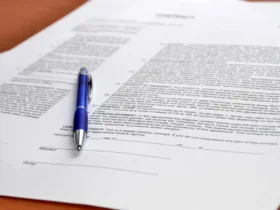Important: We updated this article in August 2023 to ensure all info below is correct. Applying for Social Security disability benefits is one thing. Getting awarded benefits is quite another. The SSD claim process is very difficult. And since each claim represents a real person, it’s also quite personal. Every person who applies has their own unique circumstances, and each condition comes with different challenges. Your disability status may not define you, but it certainly affects whether the Social Security Administration pays you benefits. And once you’re on SSDI or SSI benefits, the SSA regularly confirms your disability status before your payments keep going.
FAQs About How the SSA Confirms Your Disability Status
Disability status questions come up often among people who apply for benefits with the SSA. And your current health (or symptoms) determine how long you keep getting monthly payments. So, we’ll answer the six questions that come up most often about checking your disability status below.
1. Does the SSA confirm your disability status after you apply for benefits? If so, how do they do it?
A: Yes! You’ll probably need a Disability Determination Services (DDS) medical exam after you file your paperwork. If you have a very obvious health problem or one on the Compassionate Allowances List (CAL), then you might not need this exam.
Likewise, if your illness or condition clearly meets the SSA’s guidelines, they may not wish to examine you. Double amputees are one example of who can likely skip this exam.
However, in most cases, a Social Security doctor must verify your disability status at your DDS appointment.
2. If the SSA approves my application, do they check my disability status again after that? If yes, how often?
A: If you get Supplemental Security Income (SSI), the SSA checks in every 3-7 years to confirm your disability status. They do this to see if your condition or symptoms got better, worse, or stayed the same. If the SSA decides you can work again, then they stop your monthly payments.
Legally, they have to perform a Continuing Disability Review (CDR) every three years. If doctors say your medical condition won’t improve, SSI still reviews your case every 7 years until you’re 65.
But once you turn 65 years old, these CDRs automatically stop. There’s a few reasons why this happens. After your 65th birthday, you can qualify for SSI based on your age alone.
If you’re on Social Security Disability Insurance (SSDI) benefits, these CDRs stop once you turn 67 years old. Once you reach that magical age, your SSDI payments automatically switch to regular Social Security benefits.
3. If I get SSDI payments, how often will the SSA check my disability status?
A: How often the SSA checks back in with you depends on how bad your health problems are. If your doctor expects you to get better, they’ll do disability status checks much more often. For issues that should improve quickly, your first review usually happens 6-18 months after your Established Onset Date (EOD). In most cases, that’s the date when the SSA received your application paperwork.
If it’s possible for you to get better (but unclear when), the SSA confirms your disability status once every 3 years.
And if your doctor says you likely won’t get better (but it’s still possible), the SSA checks in every 5-7 years. Whenever the SSA needs a full medical exam to confirm your disability status, they will mail you a letter.
4. What happens during these disability status checks?
A: When your case is up for review again, you’ll get a letter in the mail. The SSA will send you one of two forms. The Disability Update Report is just two pages long. If you receive this form, it is because your condition isn’t likely to improve. The SSA says only about 2.5% of people require a full medical exam after filling out this form. It looks like a Scantron (remember standardized tests in school?), and no human being reviews it.
The longer form is called a Continuing Disability Review Report (CDR). This one’s about 10 pages long and similar to your initial benefits application. You’ll answer questions like:
- Did you stay overnight in a hospital during the last year?
- How often do you see your doctor to treat your condition?
- Did you have any recent tests in the past year? (i.e., EKGs, X-rays, blood work, etc.)
- Have you worked in the last 12 months?
They will also ask you to submit any updated medical evidence about your condition or symptoms. If you choose not to send that information, the SSA will get it on their own from other sources, like your doctor. Depending on your disability status or how you answer those SSA forms, one of two things will happen:
- Did you answer all questions honestly, clearly and completely within the space provided? If yes, then a machine usually approves you to keep your payments. Unless the scanner sees something unusual, no person reviews your DUR or CDR forms.
- If you wrote in the margins, added more pages or left anything blank, you may need a full CDR exam. Any time a human being reviews your CDR form, the SSA’s more likely to request another medical exam. That way, their doctor can confirm your disability status hasn’t changed.
5. How can I check my claim status while the SSA reviews it?
A: Checking on your claim’s status is easy — and important. It helps you worry less and lets you give the SSA more documents or info, if they need it. (For example: If the SSA’s waiting on medical documents, call your doctor and ask how to speed that up.) Just call your local field office, or check your application status through the SSA’s website. They’ll tell you what they need and give an estimated wait time for when you’ll get an answer.
6. What if they say I can work now and stop paying my benefits — but my own doctor doesn’t agree?
A: If you appeal within the first 10 days after your SSA letter arrives, there’s still hope. You’ll keep getting payments while they “reconsider” your case. If this happens to you, consult a lawyer for private, free advice. Attorneys can help you through the difficult appeals process and charge nothing up front. Getting your benefits reinstated upon appeal is much easier with help from a local lawyer.
How to Get Free Expert SSD Claim Help Right Now
Everyone’s disability status limits their ability to work in different ways. The best way to get paid the most benefits the SSA owes you is having a Social Security attorney help you file. In fact, it makes you almost 3x more likely to get benefits.
All these lawyers work on contingency. That means you’ll pay $0 for legal help unless you win benefits. And if you do win, then you’ll pay just one small fee after the lawyer helps you succeed.
Want to talk to a nearby expert for free about your own situation? Click the button below now to start your free online benefits quiz and see if you may qualify:
Get Your Free Benefits Evaluation
Lori Polemenakos is Director of Consumer Content and SEO strategist for LeadingResponse, a legal marketing company. An award-winning journalist, writer and editor based in Dallas, Texas, she's produced articles for major brands such as Match.com, Yahoo!, MSN, AOL, Xfinity, Mail.com, and edited several published books. Since 2016, she's published hundreds of articles about Social Security disability, workers' compensation, veterans' benefits, personal injury, mass tort, auto accident claims, bankruptcy, employment law and other related legal issues.
Mandy Voisin is a freelance writer, blogger, and author of Girls of the Ocean and Star of Deliverance. As an accomplished content marketing consultant, mom of four and doctor's wife, Mandy has written hundreds of articles about dangerous drugs and medical devices, medical issues that impact disabled Americans, veterans' healthcare and workers' compensation issues since 2016.

















